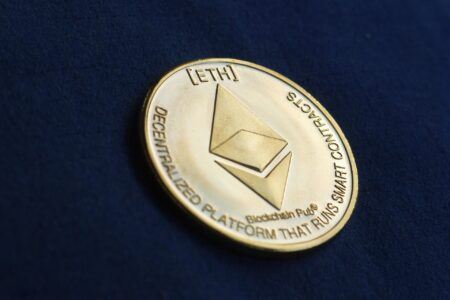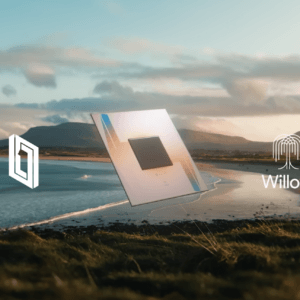Carly Klein is a law student at Loyola Law School in Los Angeles. A graduate from Boston University with a B.A. in Political Science & Philosophy, she has experience in marketing, communications, and sales. She is a Los Angeles native and seeks to pursue a career in IP & Business Litigation.
Blockchain, one of the most notable and controversial technological developments of our time, has shifted our global perception of financial transactions and digital identities.
Its rapid growth and its speculated value have made it attractive to investors and companies who see its disruptive potential. Others have jumped on the bandwagon, so to speak, feeling as though they will miss out if they don’t strike while the iron is hot.
One way that many companies have demonstrated their belief in blockchain is by obtaining patents.
In the last few years since the blockchain craze took off, big banks especially have been scooping up blockchain-related patents. Many of these companies, however, have shared that they have no set intention to actually utilize these patents in the future. Others only applied for patents out of a feeling of obligation, afraid of giving up a spot at the forefront of the trend.
Why then, are they applying for patents? And how is it even possible to patent such a speculative and ever-changing technology?
What is a patent?
Patents are a powerful form of intellectual property (IP) protection. They grant an exclusive right, for up to twenty years, over an invention that is described within an issued patent claim. A key aspect that distinguishes patents is that any published patent documentation must enable a consumer of ordinary skill to make and use the invention.
In U.S. law, there are three types of patents: utility, design, and plant.
Generally, a “utility patent” protects the way an article is used and works (35 U.S.C. 101), while a “design patent” protects the way an article looks (35 U.S.C. 171). Utility patents are the most common type of patent and are among the most valuable forms of intellectual property protection an inventor can obtain.
Under the United States Patent and Trademark Office guidelines, §101 of the Patent Act defines the subject matter that is eligible for a patent:
– “Whoever invents or discovers:
– Any new and useful process, machine, manufacture, or composition of matter,
– Or any new and useful improvement thereof,
– May obtain a patent therefor, subject to the conditions and requirements of this title.”
Is it possible to patent within blockchain? Yes- with an asterisk.
A blockchain patent, like any other patent, is a set of exclusive rights that an inventor receives in exchange for publicizing their invention to the public.
Obtaining a blockchain patent is akin to getting a software patent based on the abstract ideology behind the technology’s functionality. Both are based on the performance of a series of steps, conceptualized as an algorithm.
Given the above criteria for patent eligibility, blockchain innovation has to fall within the ‘new and useful process’ or ‘any new and useful improvement’ scope to be patent eligible.
Therefore, says JD Houvener, Patent Attorney of Bold Patents, “If a patent applicant seeks protection over an algorithm-based innovation, such as a blockchain methodology, the invention will only be patent-eligible if the patent application’s set of claims includes a method designed to solve a problem or make a process more efficient.”
For example, says Houvener, “if the idea behind the innovation includes functionality that adds a specific limitation or combination of limitations to cryptocurrency transactions, then it should be patent eligible. The cryptocurrency transaction itself, however, is not.”
Blockchain Patents
Given these stringent requirements, an inventive step that covers a solution is critical to demonstrate eligibility. Innovations in the world of blockchain often focus on evolving methodologies into more simple, efficient, streamlined processes. This place where cryptocurrency overlaps with innovation is where patents play a central role.
Crypto-specific patent applications grew by 16 percent to a total of 602 patent applications in 2017, while the blockchain-specific patent application number increased by 300%.
These numbers demonstrate that there are several major companies dedicated to investing in the future of cryptocurrency, whatever that future may look like. Patents are a long-term investment by their very nature, so it is a good sign for blockchain innovators to have big companies taking the gamble and leading the way.
The major patent players
The following are notable examples of cryptocurrency patent applications that have either been filed or granted:
– Mastercard obtained a patent with the USPTO that grants it rights for a method for “managing fractional reserves of blockchain currency.” The method covers the storage of both fiat wealth and cryptocurrencies under one account.
– Paypal filed a patent with the USPTO for a technology that allegedly can speed up cryptocurrency payments through the utilization of secondary wallets. The process that PayPal seeks to optimize settles cryptocurrency payments between merchants and buyers, on retail or e-commerce platforms. The use of secondary wallets would allow the transfer of unique keys of buyers and sellers to be transferred privately.
– Amazon obtained two patents with the USPTO:
– The first patent covers “Signature Delegation” and describes cryptographic signatures in a Merkle-tree based data scheme. Merkle-trees are one of the fundamental components of the blockchain. Amazon’s patented data structure enables participants to check if data is unaltered or to ensure that other participants are not sending fake data.
– The second covers “Extending Grids in Data Storage Systems” and describes a method for creating extendable shards in a database. This is useful for creating considerable flexible datasets, like those seen in a blockchain. The idea behind the patent is that layering the system structure will ensure the efficiency and portability of the system.
As evidenced by the intricacy of each innovation, these applications qualify under USPTO requirements because they include the inventive step element.
Each innovation serves as a method that will make blockchain procedures more efficient, more secure, or more useful.
Only time will tell, however, if these innovations will see a day in which they become useful- or if they will remain stagnant, with no market demand.









